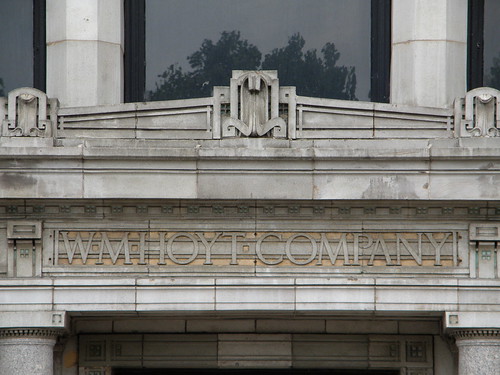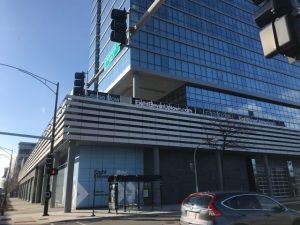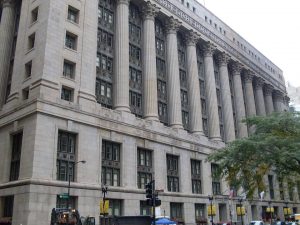Historic warehouses in Pilsen that would have been converted into low-rent workspaces for struggling artists were rezoned recently for a 200-room hotel with a restaurant and ballroom.
The Chicago Plan Commission unanimously voted to change the zoning at the W.M. Hoyt Co. building at 465 W. Cermak Road in the near Southwest Side neighborhood of Pilsen. Plans for the vacant building also include 78,150 square feet of retail.
 Developer Raymond Chin, of R.M. Chin & Associates, Inc. said he was in talks with the Hilton chain as a potential client. Chin also said he planned relocate Chinatown’s Phoenix Restaurant, where he is a partner, over to the property to potentially fill space for the restaurant.
Developer Raymond Chin, of R.M. Chin & Associates, Inc. said he was in talks with the Hilton chain as a potential client. Chin also said he planned relocate Chinatown’s Phoenix Restaurant, where he is a partner, over to the property to potentially fill space for the restaurant.
The Hoyt building has historical significance due to its role as a storage space for spices and other commodities during the beginning of the 20th century.
Christine Raguso, acting commissioner of the Department of Community Development, said the rezoning was a natural fit for Pilsen despite the uncertainty in the current economic climate.
“It’s good for economic development, it’s jobs and it’s getting the land back on the tax roll development,” Raguso said.
Hector Saldana, of the Eighteenth Street Development Corp., said the project has the strong support of his organization.
Chin’s attorney, Rolando Acosta, said they would need to move South Grove Street, which is perpendicular to the Hoyt Building, before development of the property could begin. Acosta said the developer would move the street southwest so potential hotel guests have easier access to the hotel.
Chin said he is relying on a mix of private equity, loans and foreign investors to finance the project, which he said he thought of after visiting the neighborhood.
“I looked around and saw, ‘Mister Rogers’ Neighborhood,’” Chin said, adding that he saw the hotel as a benefit for traveling businessmen looking to travel to and from the city.
The four historic structures near Cermak Bridge, including W.M. Hoyt Co. Building, were recommended for development as a creative industries district, according to a 2007 study by ULI Chicago and the Campaign for Sensible Growth.
The study defined a creative industries district as an area that could include “cafes, arts supply establishments, storage and screening rooms,” in addition to artist workspaces.
Julie Burros, director of cultural planning at the City of Chicago Department of Cultural Affairs (DCA), said the city was not abandoning its plans to develop nearby property as artist workspaces and the two projects were not incompatible.
“Is [a hotel] what we would have picked for the space? Not exactly,” Burros said. “But we think that the retail will give creative people opportunities. We’re in favor of anything that draws investments to the area.”
Burros noted that while the the Department of Cultural Affairs was awarded a $250,000 grant from the National Endowment for the Arts, the department had yet to actually receive any money.
Accordingly, Burros said the city was just getting started on the Cermak Creative Industries District. The department hopes to have the development work completed in a year, according to Burros.
Ald. Danny Solis (25th) was not present at last month’s meeting, but Fernando Espinoza, project manager for the city, said the rezoning had the alderman’s approval. The plans will now move to the Chicago City Council for voting.
Chloe Riley contributed to this report












Be First to Comment